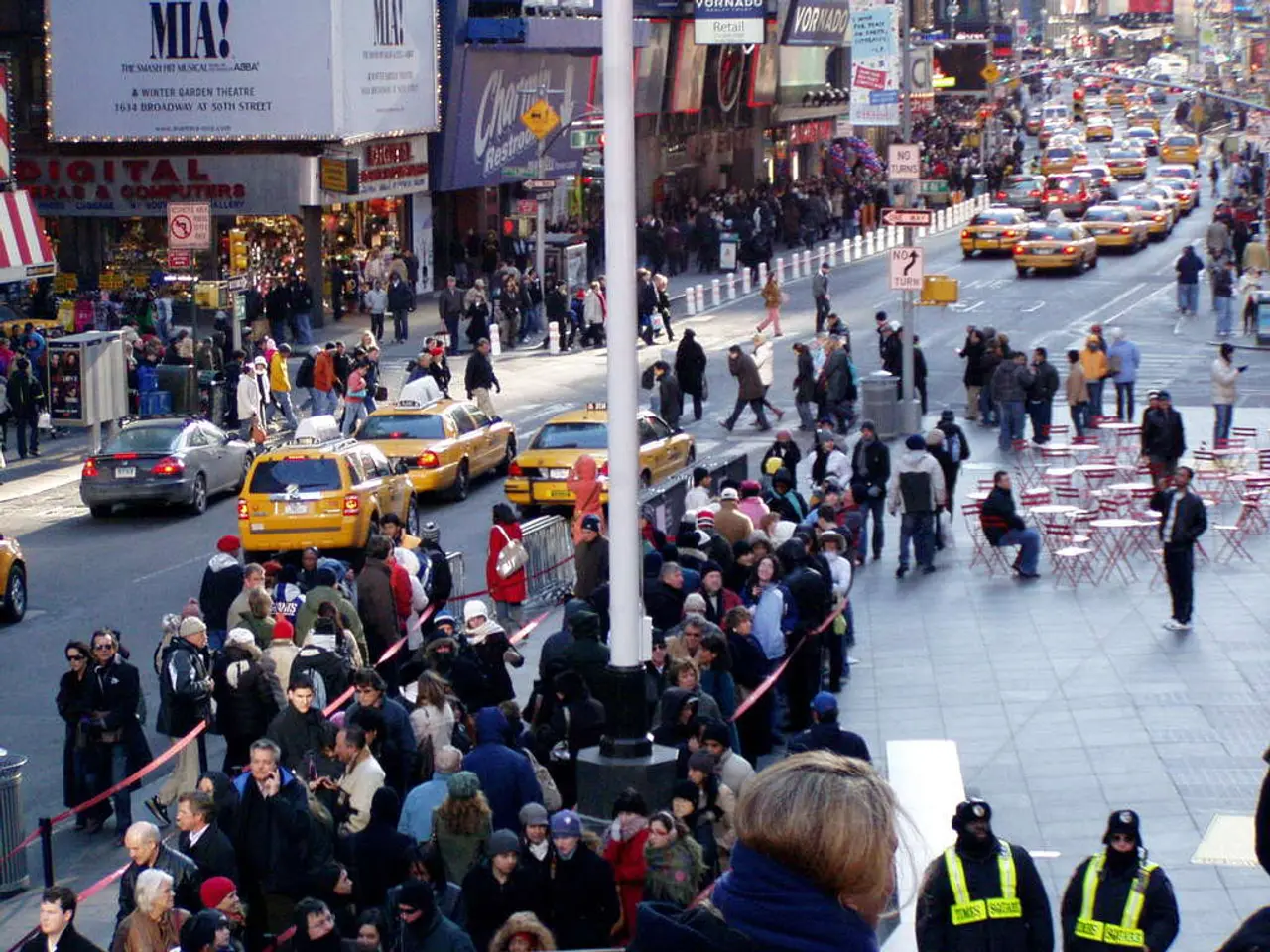Is it possible to stroll around in Delhi?
Delhi, a city steeped in history and rich culture, is facing a modern challenge: inadequate pedestrian infrastructure. Despite boasting some of the best road infrastructure in the country, the city falls short when it comes to providing safe and accessible footpaths for its residents and visitors.
In various parts of the city, pedestrians are forced to navigate crowded streets due to encroachments on sidewalks. Areas like Azadpur and Lajpat Nagar are particularly affected, with hawkers occupying every inch of the sidewalk, forcing pedestrians onto busy streets. A walk from Kashmere Gate metro to Chandni Chowk, barely 1.85 kilometres, takes over 35 minutes due to the lack of footpaths and obstructions. Even where sidewalks exist, they often exclude the elderly, disabled, and parents with strollers.
Urban mobility expert Sarika Panda Bhatt believes Delhi's problem isn't one of money or space, but intent. She states that pedestrians are at the bottom of the planning hierarchy, a situation that dates back to the late 1980s and into the 1990s when the car population exploded, and the city stopped making room for the walker.
To address these issues, several initiatives have been launched. The Delhi Development Authority (DDA) recently announced an extensive overhaul of pedestrian infrastructure in Dwarka, aiming to create footpaths that comply with Indian Roads Congress (IRC) guidelines. This includes building footpaths at least 1.8 meters wide to accommodate wheelchair users, installing solar lights, ensuring barrier-free designs, providing tactile paving for the visually impaired, and adding ramps with gentle slopes at crossings for universal accessibility.
The Supreme Court of India has also stepped in, mandating all states and Union Territories to finalize and implement guidelines for unobstructed, disabled-friendly footpaths within two months. This judicial push aims to enforce compliance and prioritise pedestrian needs in road design.
However, challenges remain in full compliance and implementation. A recent audit found that no street in Delhi fully complies with all pedestrian infrastructure norms. Experts highlight that pedestrians are often at the bottom of the planning hierarchy, with priorities skewed towards vehicles and speeding infrastructure like flyovers.
To overcome these challenges, urban mobility experts and organizations like the Raahgiri Foundation advocate for rethinking Delhi's road design to prioritise pedestrians and cyclists. The idea is to create safer, greener, and more comfortable footpaths that support the majority users of city roads and enhance overall safety.
Despite these efforts, pedestrian safety remains a concern in Delhi. According to Delhi Police data, pedestrians form 43% of road crash fatalities, and the number of pedestrians injured in crashes increased from 1,777 in 2022 to 1,941 in 2023.
In conclusion, efforts are underway to improve pedestrian infrastructure and safety in Delhi. These initiatives include government projects, court mandates, expert recommendations, and advocacy. However, consistent funding and political will are needed to sustain these improvements and make Delhi a city where walking is safe, comfortable, and enjoyable for all its residents and visitors.
- The inadequate pedestrian infrastructure in Delhi, a city known for its rich culture and history, poses a significant modern challenge, particularly in areas like Azadpur and Lajpat Nagar.
- Urban mobility expert Sarika Panda Bhatt believes that Delhi's problem with pedestrian infrastructure is not about a lack of funds or space, but rather a lack of intent to prioritize pedestrians.
- To address these issues, the Delhi Development Authority (DDA) has announced an extensive overhaul of pedestrian infrastructure in Dwarka, focusing on creating footpaths that meet Indian Roads Congress (IRC) guidelines.
- The Supreme Court of India has also mandated all states and Union Territories to finalize and implement guidelines for unobstructed, disabled-friendly footpaths within two months.
- Despite these initiatives, challenges remain in terms of compliance and implementation, with no street in Delhi fully complying with all pedestrian infrastructure norms.
- To overcome these challenges, experts advocate for rethinking Delhi's road design to prioritize pedestrians and cyclists, creating safer, greener, and more comfortable footpaths for the majority of city road users.




